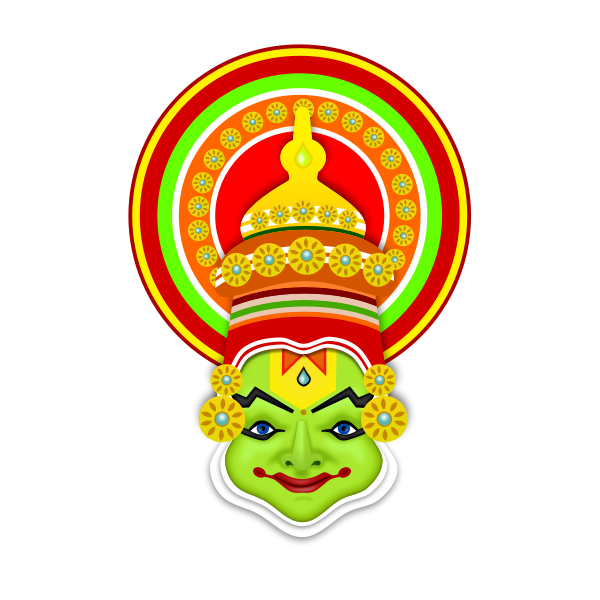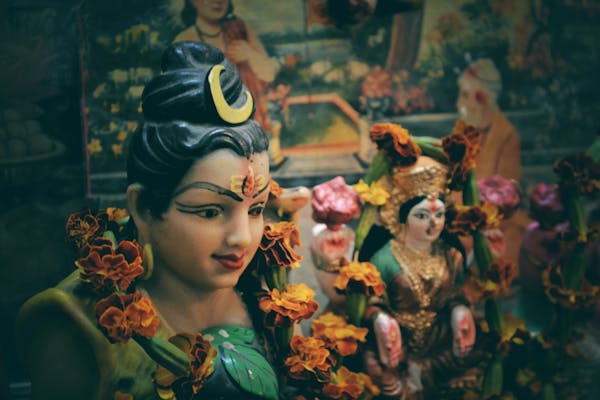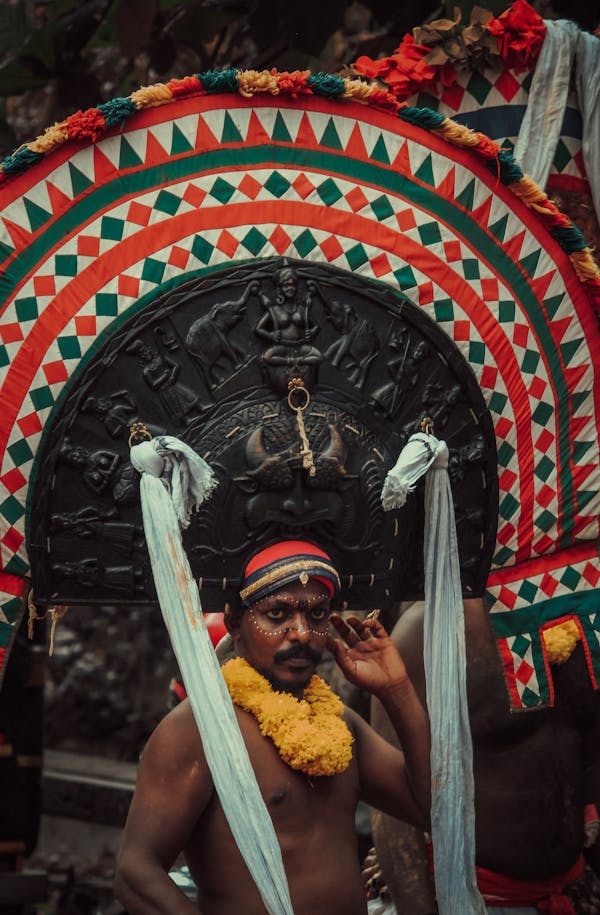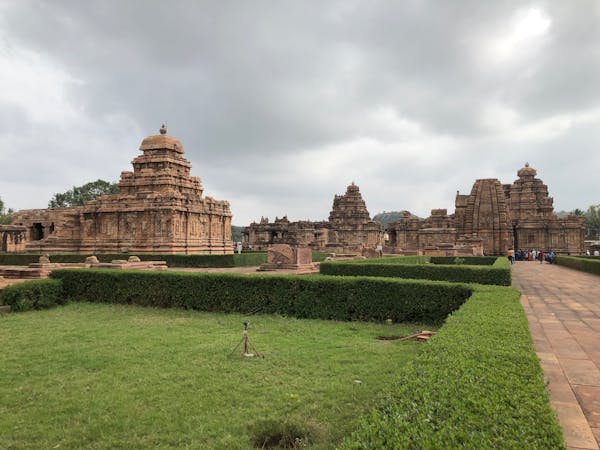Introduction
India's long history dates back to 2500 B.C.
Today, I want to share with you some interesting details about India's long and fascinating history.
Did you know that India's history dates back to 2500 B.C.? That's right - this ancient country has a rich and diverse past that has shaped its unique culture and traditions.
One of the earliest civilizations in India was the Indus Valley Civilization, which flourished between 3300 B.C. and 1300 B.C. This civilization is known for its advanced architecture, including the construction of the first known urban sanitation systems.
Throughout its long history, India has been ruled by numerous empires and dynasties, each of which has left its mark on the country. From the Maurya Empire, which spread Buddhism across Asia, to the Mughal Empire, which introduced elements of Islamic art and culture, India's history is a tapestry of diverse influences.
But India's history isn't just limited to its ancient past. In the modern era, the country has played a significant role on the global stage, including its role in the independence movement against British colonial rule.
As you can see, India's history is rich and diverse, with a timeline that stretches back millennia. To make your post visually appealing, don't forget to include some relevant images, and make sure to use a skimmable format with headings, subheadings, and bullet points to make it easy for your readers to follow along.
 |
| image via Google |
The Indus Valley Civilization and its impact on Indian culture
The Indus Valley Civilization, also known as the Harappan Civilization, is one of the earliest and most advanced human civilizations, dating back to 3300 to 1700 B.C. This ancient civilization flourished in the Indus Valley, located in present-day Pakistan and northwest India, along the banks of the Indus River and its tributaries.
The Indus Valley Civilization had a significant impact on Indian culture, as it was one of the oldest civilizations in the region and laid the foundation for many of the cultural and technological advancements that followed. This civilization is known for its advanced architecture, including the construction of the first known urban sanitation systems. It is also notable for its sophisticated system of government, trade, and social organization. In addition, the Indus Valley Civilization made important innovations in standardized weights and measures, seal carving, and metallurgy with copper, bronze, lead, and tin.
The Indus Valley Civilization was divided into two main phases: the Early Harappan phase, which lasted from 3200 B.C. to 2600 B.C., and the Mature Harappan phase, which lasted from 2600 B.C. to 1900 B.C.
Unique customs and traditions
The cultural taboo surrounding the use of the left hand
The use of the left hand is considered taboo or impolite in some cultures around the world. In many countries, the left hand is traditionally reserved for cleaning oneself after using the bathroom and is therefore considered unclean. It is considered poor form to use the left hand for activities such as shaking hands, offering a gift, giving or receiving something, eating, pointing, or touching someone in these cultures.
For example, in Indonesia, it is considered impolite to use the left hand for any of these activities. It is also considered taboo in many countries in the Middle East, Africa, and South Asia. In these cultures, it is important to use the right hand for all interactions to show respect and avoid offending others.
This cultural taboo surrounding the use of the left hand is deeply ingrained in many societies and can have serious consequences if not observed. It is important for travelers and those unfamiliar with these customs to be aware of and respect these cultural traditions when interacting with people in these countries.
Unique customs and traditions
Arranged marriages are a unique custom that is still practiced in some cultures around the world. In societies with arranged marriages, a matchmaker is usually responsible for arranging a marriage that will be satisfactory to both families involved. A dowry or bridewealth is often exchanged in societies that favor arranged marriages.
In some cultures, the complexity of marriage ceremonies reflects the level of social interest in marriage and may be related to the extent to which a society restricts women's sexual relationships outside of marriage. In these cultures, marriage is often seen as an institution for reproduction, and extramarital sex or reproductive issues may be grounds for divorce.
Arranged marriages are a traditional form of marriage that is losing popularity in some cultures, but is still practiced in many parts of the world. In these marriages, the bride and groom may not meet until the wedding day and any interaction between them may be limited to small talk.
The importance of family is another unique custom that varies widely between cultures. In some cultures, the family is the central unit of society and plays a significant role in the lives of its members.
India's religious diversity
India is the birthplace of four major religions: Hinduism, Buddhism, Jainism, and Sikhism
India is known for its religious diversity, with many different beliefs and practices coexisting within the country. One unique aspect of India's religious landscape is that it is the birthplace of four major religions: Hinduism, Buddhism, Jainism, and Sikhism. These religions have played a significant role in shaping the culture and history of India, and continue to be practiced by millions of people around the world today.
Hinduism is the oldest of the four religions and is considered the oldest living religion in the world. It originated in northern India and is characterized by a belief in multiple deities, reincarnation, and the idea that one's actions in this life determine their fate in the next. Hinduism has a rich tradition of scriptures, rituals, and practices, and is a central part of the culture of India.
Buddhism, which originated in India, is based on the teachings of Siddhartha Gautama, who later came to be known as the Buddha. The religion emphasizes the Four Noble Truths, the Eightfold Path, and the concept of enlightenment, and has a strong tradition of meditation and mindfulness. Buddhism spread from India to other parts of Asia and is now practiced by millions of people around the world.
Jainism is another Indian religion that emphasizes non-violence, self-control, and the pursuit of spiritual enlightenment. It is based on the teachings of a series of spiritual leaders known as Tirthankaras and is practiced by a small but dedicated community in India and beyond.
Sikhism is a religion and philosophy founded in the Punjab region of the Indian subcontinent in the late 15th century. It is the fifth-largest organized religion in the world, with around 30 million followers. Sikhs believe in one God and follow the teachings of the ten human Gurus who founded the religion. Sikhism emphasizes equality, justice, and the pursuit of spiritual growth. Sikhs cover their uncut hair with a turban, which represents a commitment to equality and justice. Sikhism is distinct from Hinduism and Islam, and advocates for the freedom of religion for all individuals.
The percentages of the population that identify with each religion
According to research from the Public Religion Research Institute (PRRI), in 2020, 60% of Native Americans identified as Christian, mostly comprised 47% who were Protestant (28% evangelical, 19% non-evangelical). An additional 11% were Catholic, 1% were Latter-day Saints, and 1% were Jehovah's Witnesses. 2% identified with another religion, 1% each were Jewish and Muslim, and less than 1% were Hindu and Buddhist.
According to Statista, in 2021, 25.1% of Americans were unaffiliated with any religion. A further 14.6% of Americans were White evangelical Protestants, and an additional 13.9% were White mainline Protestants. Another 5.4% were Black Protestants, and 5% were Catholics. 2.4% identified with other religions, and 1.4% were Mormon.
According to the CIA World Factbook, in 2021, the percentages of the population that identified with each religion were: Bahai - 0.1%, Buddhist - 5.9%, Christian - 29.8%, Hindu - 15.4%, Jewish - 0.2%, Muslim - 1.9%, Sikh - 0.5%, other - 3.5%, unaffiliated - 24.1%.
Existence of other minority religions in India
According to the 2011 census, 79.8% of Indians practice Hinduism, 14.2% practice Islam, 2.3% practice Christianity, 1.72% practice Sikhism, 0.7% practice Buddhism, and 0.37% practice Jainism. Other minority religions in India include Zoroastrianism, Yungdrung Bon, the Baháʼí Faith, Sanamahism, and Judaism, which each has at least several thousand adherents in the country. Some individuals in India also practice Sufism, a mystical tradition most closely associated with Islam.
Classical dance forms
Classical dance in India
Classical dance forms in India, also known as Shastriya Nritya, are an integral part of the country's cultural diversity and have a long history dating back to ancient times. These dance forms are known for their grace, purity, expressions, and gestures, and are characterized by their use of intricate footwork, hand movements, and facial expressions to convey a story or emotion. Bharatanatyam, Kathak, and Odissi are a few examples of the classical dance forms of India, each of which has its own unique style and origins. Classical dance forms in India are typically performed in temples, at festivals, and during cultural events, and are often accompanied by classical music and instruments.
Dance forms, such as Bharatanatyam
Bharatanatyam is a classical dance form from the South Indian region of Tamil Nadu. It is one of the eight prominent classical dances in India and has a history of over 2,000 years. It was originally called Sadeer Attam or Sadir and was performed solo by devadasi, who were women dancers and priestesses, as a form of prayer connected with the practice of temple worship. The name Bharatanatyam is derived from the combination of two words: "Bharata," which refers to a mnemonic comprising bhava (emotion and feelings), raga (melody), and tala (rhythm); and "Natyam," which means dance. There are three popular dance forms in Bharatanatyam: Melattur, Pandanallur, and Vazhuvoor. It is typically performed in Carnatic music, which is a style of classical music that originated in South India.
Discuss the origins and unique features of each dance form
The origins of dance can be traced back to ancient civilizations and cultural traditions around the world. Dance has played a role in rituals, celebrations, and storytelling for thousands of years, and has evolved into a diverse range of forms and styles.
There are many unique features that distinguish different dance forms from one another. Some dance forms may emphasize particular body movements or rhythms, while others may focus on specific musical accompaniments or cultural traditions.
One dance form that has its roots in the fusion of several ethnic percussive dances is tap dance. Tap dance involves the use of tap shoes to create rhythmic sounds as a form of percussion, and has a long history dating back to African tribal dances.
Another dance form that has its origins in cultural traditions is Bharatanatyam, a classical dance form from the South Indian region of Tamil Nadu. Bharatanatyam is known for its graceful movements, expressive hand gestures, and intricate footwork, and has a rich history dating back over 2,000 years.
Other dance forms, such as jazz, hip-hop, and ballet, may also have unique features and origins that distinguish them from other dance styles. In jazz dance, for example, dancers often use improvisation and expressive movements to interpret the music, while hip-hop dance may involve fast-paced, energetic footwork and body movements. Ballet, on the other hand, is a highly technical dance form that emphasizes precise, graceful movements and positions.
Indian cuisine
The diverse and flavorful nature of Indian cuisine
Indian cuisine is known for its diverse and flavorful nature. It is a blend of various regional and traditional cooking styles, resulting in a wide range of dishes that are unique and distinct from one another. Indian cuisine is characterized by the use of a variety of aromatic spices, herbs, and vegetables, as well as a variety of cooking techniques such as grilling, frying, and roasting. Indian cuisine is also influenced by cultural and religious traditions, with certain dishes being associated with specific festivals and celebrations. Some popular examples of Indian dishes include tandoori chicken, biryani, naan, samosas, and masala chai. Indian cuisine is enjoyed all over the world, with Indian restaurants and food stalls being found in many cities around the globe.
The use of aromatic spices and the prevalence of vegetarianism
Indian cuisine is known for its diverse and flavorful dishes. One of the main characteristics of Indian cuisine is the use of aromatic spices, such as cardamom, cumin, and coriander, which give Indian dishes their unique and distinct flavors. Indian cuisine also features a wide range of vegetarian dishes, due in part to the influence of Hinduism, which encourages non-violence towards animals. Many traditional Indian dishes are made with vegetables, legumes, and grains, and are often served with rice or bread. Indian cuisine also includes a variety of meat dishes, particularly those made with lamb, chicken, and seafood.
Discuss the regional variations within Indian cuisine
Indian cuisine is known for its diverse and flavorful nature, with dishes ranging from spicy curries to creamy yogurt-based dishes. One of the key features of Indian cuisine is the use of aromatic spices such as cumin, turmeric, and coriander, which are often used to add depth and flavor to dishes. Indian cuisine also has a strong tradition of vegetarianism, with a wide variety of vegetarian dishes available throughout the country.
However, there are also significant regional variations within Indian cuisine. For example, the cuisine of the northern regions of India tends to be more heavily influenced by Persian and Central Asian flavors, with dishes such as kebabs and biryanis being popular. In contrast, the cuisine of the southern regions tends to be more focused on rice and lentils, with dishes such as idlis and dosas being popular. In the eastern and northeastern regions of India, the cuisine tends to be more influenced by Chinese and Southeast Asian flavors, with dishes such as momos and thukpa being popular. Overall, the rich and diverse nature of Indian cuisine reflects the country's cultural and regional diversity.
Conclusion
India is a diverse and culturally rich country with a long history. Here are some main points about India's culture:
-
India has a unique and diverse culture that is influenced by its history, geography, and religion.
-
Hinduism is the dominant religion in India, but there are also significant populations of Muslims, Christians, Sikhs, and Buddhists.
-
India has a diverse and colorful traditional dress, with different styles worn in different regions of the country.
-
Indian cuisine is diverse and reflects the country's cultural and religious traditions. Indian food is known for its use of spices and herbs, and it is often served with rice or bread.
-
India is home to a wide variety of languages, with Hindi and English being the most widely spoken.
-
India has a rich tradition of art and literature, with a long history of poetry, music, dance, and theater.
I encourage you to continue exploring and learning about India's culture. There is so much to discover and appreciate about this fascinating country.



